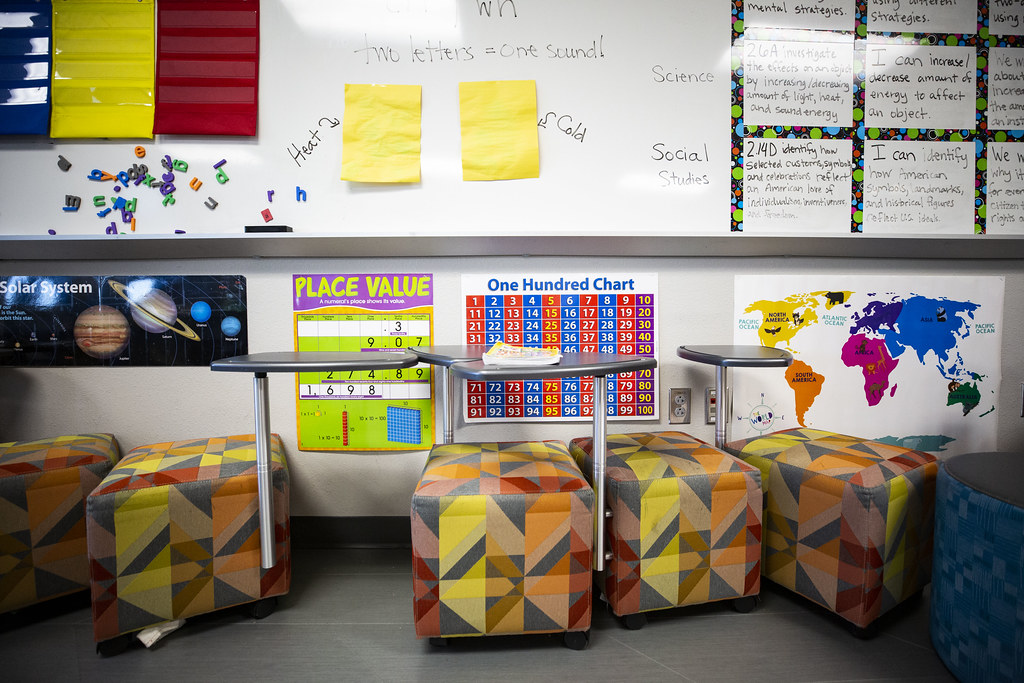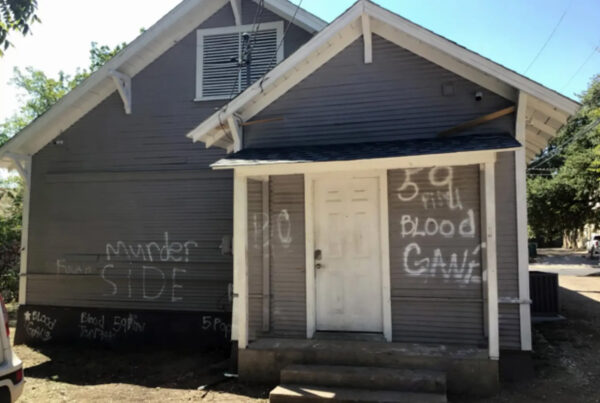A legal fight over the Texas Education Agency’s school accountability scoring system has delayed the release of the state’s annual ratings. But parents and those interested in how Texas public schools are doing have another tool.
For years, the Houston-based nonprofit Children at Risk has released its own school ratings, and its 2022-2023 findings are out now. Among the highlights: Lingering issues from the pandemic have led to “plateauing” of progress in some areas, especially for low-income students.
Bob Sanborn, president and CEO of Children at Risk, spoke with the Standard about the report and what can be done to address some of the challenges public schools are facing.
This transcript has been edited lightly for clarity:
Texas Standard: Tell us a little bit more about this annual ranking that your organization does. How is it different from what the TEA releases each year?
Bob Sanborn: We’ve been doing it for about 19 years. So in many ways what the TEA did is they modeled theirs after ours. So there are a lot of similarities. The Children at Risk ranking is maybe a tad more rigorous.
We also have a separate ranking which looks at those children that are growing up in low-income families but are still going to high-performing schools, and how are those kids doing. That makes up the majority of the kids in our state, so we really like to pay attention to that. But I think overall some similarity. But this year, of course, we’re the only game in town.
Let’s talk about the new rankings out for 2022-2023. What stands out?
I think what stands out is that for 19 years, we always saw a little bit of progress, especially with low-income kids. Even if it’s little and even if it’s not enough, there was progress. I think this year for the first time, what we’re seeing is a decrease in some areas, and/or a plateauing. And so it doesn’t bode well. Right? I think this is a red flag for us.
And there are probably a couple of things that are contributing to this. Certainly, we know the pandemic is contributing to it, and this is one of the reasons why school districts didn’t want the TEA to release, you know, like, “hey, we’re not ready, because there’s been a pandemic. And, you know, this has adversely affected our kids.” So we didn’t see a big, huge decrease because of the pandemic, but we certainly didn’t see things getting better after the pandemic.
I think the other thing that we’re seeing, and that’s reflected, is that our state really didn’t pay attention to how do we help schools emerge from the pandemic. And so, as an example, last year’s legislative session, we had $33 billion in surplus. None of it went to public education. We didn’t get teacher raises. You know, our state Legislature spent a lot of time dillydallying on other things, but not paying attention to our future, to our children, to public education. I think that’s had an impact as well.
» GET MORE NEWS FROM AROUND THE STATE: Sign up for Texas Standard’s weekly newsletters
I think a lot of folks want to know where schools are doing better and where they seem to be doing worse. And of course, geographically speaking – are cities doing better or worse?
Yeah, it’s quite clear when you look at the rankings overall for the state, you know, there are certain areas that do better than others. And one of the big standout areas is the Rio Grande Valley and, to a lesser extent, the El Paso area. Right on the border here, we have these kids that are coming from low-income families, in some cases very low-income families, and yet they tend to overachieve.
I mean, we’re seeing in the Rio Grande Valley, schools with significant numbers of kids growing up in poverty that are getting A’s and B’s. I mean, it’s more than just being outliers. There’s something going on there, which we can talk more about, but I think we’re seeing some excellence going on down there.
I think the other two areas where we see things better than average is the Dallas area seems to have some areas that are overachieving, especially when it comes to low-income kids, but also in the high-income areas. I mean, Dallas and Houston have these extraordinary magnet schools that are some of the best in the country, really. And so you see that happening. Houston has a history of being sort of near the top. They’re not as good as they have been in the past, but they’re still better than many other cities around the state.
And I think then when you go down to the bottom, you’re looking at places around San Antonio that are not just doing as well. And San Antonio – well it’s often said, you know, it’s because they have poverty. But when you compare them to border regions, far less poverty than the border regions, they’re just not sort of even reaching some of those levels.
Is there any, if you were to be advising lawmakers, perhaps a takeaway from this in public policy terms? What would you say?
I think when we see schools doing super well, there’s a couple of indicators that we could always point to. One is that when it comes to low-income kids, there’s always this, the kids have always done pre-K, right? So if you have high-quality full day pre-K in the district and those kids as a cohort move from pre-K into kindergarten into first grade, we inevitably see those kids performing at pretty high levels.
I think also, you can see districts where they’ve recruited activist superintendents who in turn are putting in sort of think-outside-of-the-box principals. In almost every case, we see those those districts doing really quite well.
And I think the other sort of thing that we see a lot is sort of a response to data, right? Districts that use the data and use it as reason for intervention are doing quite well.
There’s this whole also movement around time on task, you know, especially with low-income kids. And three-quarters of the kids in Texas are low income. And, if they focus more time – whether it’s high-quality afterschool programs or high-quality before school programs, things that sort of keep that learning going – we see a lot of excellence there.













